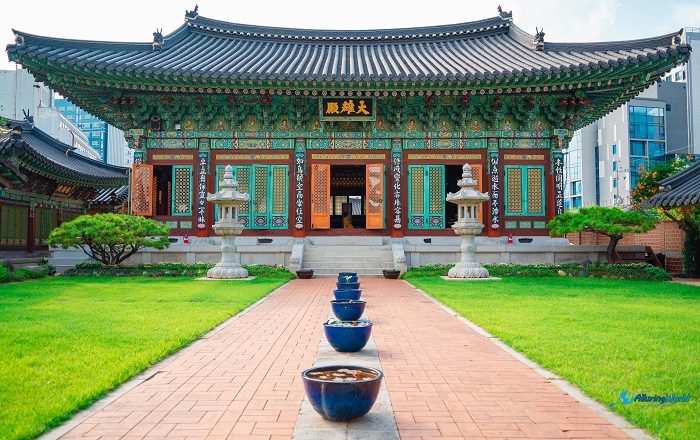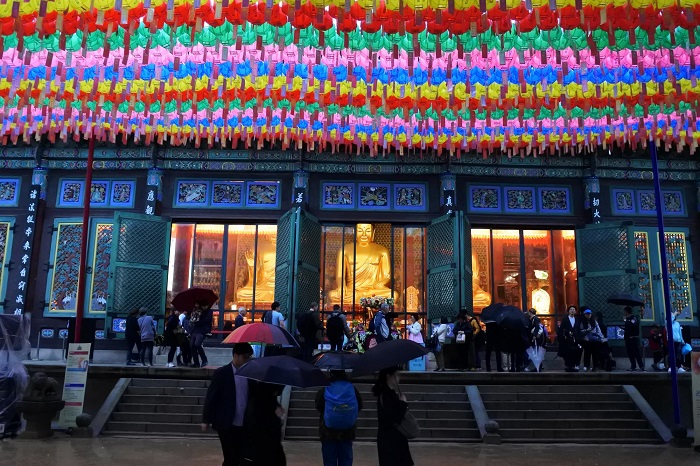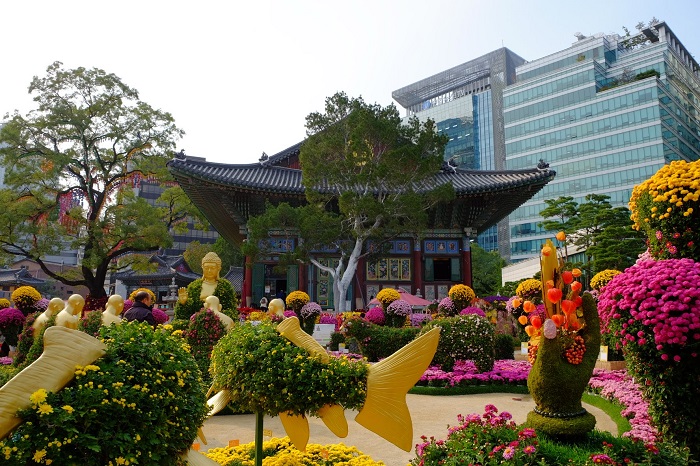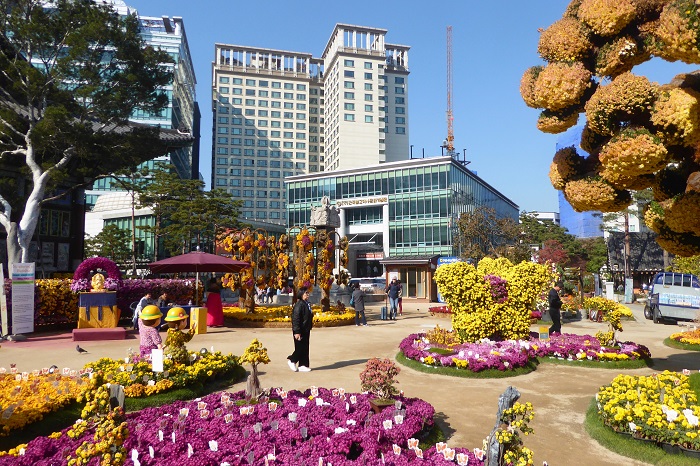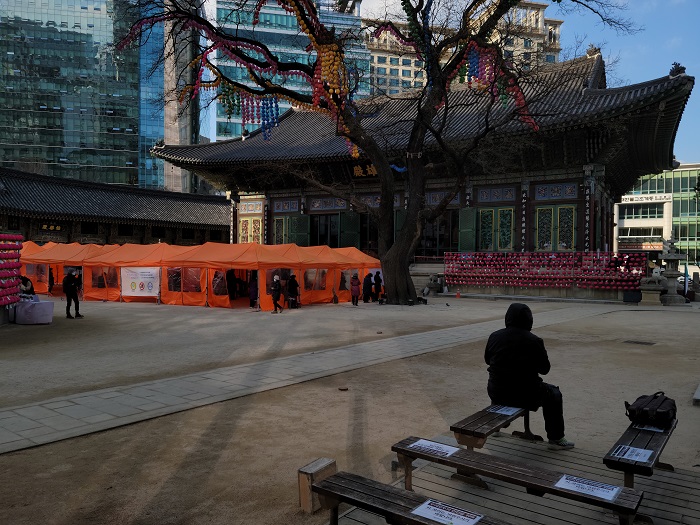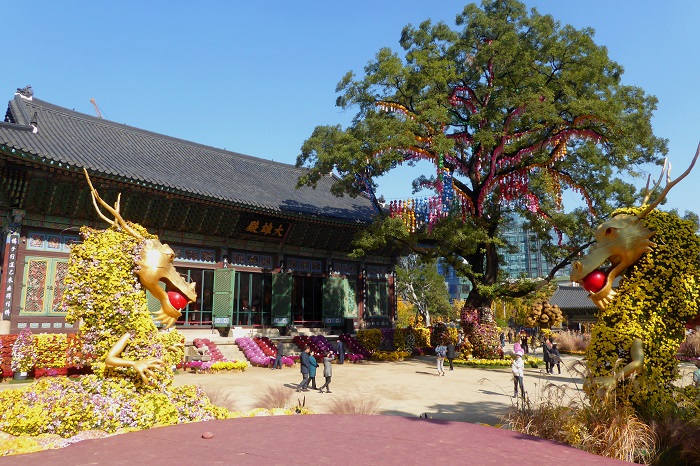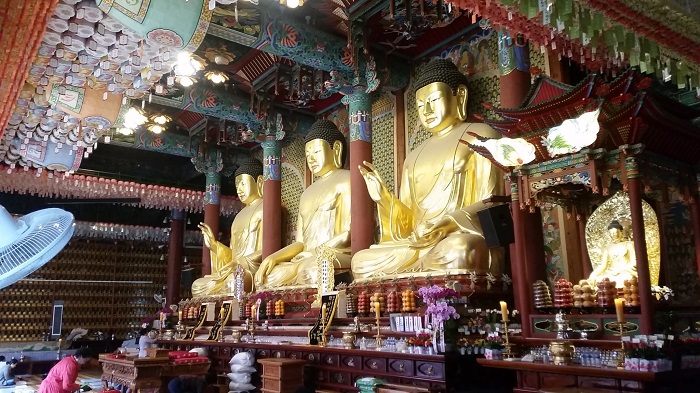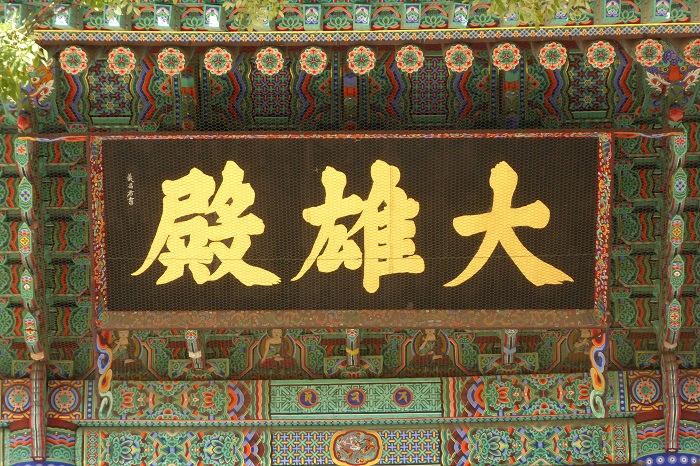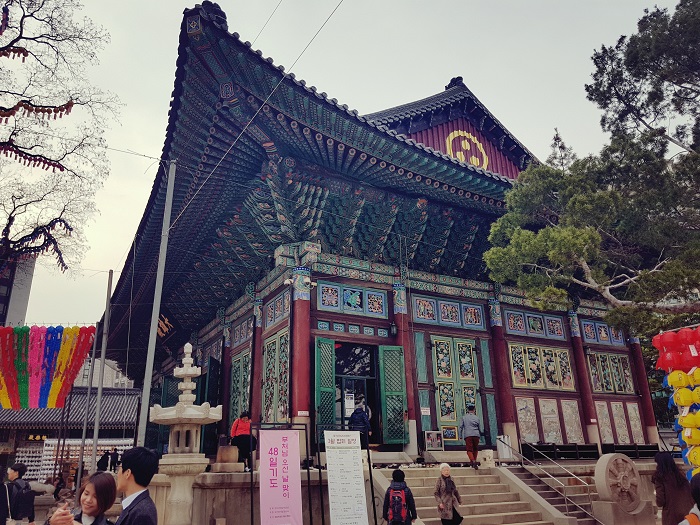Jogye Temple is a serene and historically significant Buddhist temple located in the Jongno District, which is in the heart of Seoul, the capital city of the Republic of Korea, commonly referred to as South Korea. Being the main temple of the Jogye Order of Korean Buddhism, this Korean temple holds a central place in the religious, cultural, and historical life of the country, as it was founded over six centuries ago. Jogye Temple is not only a spiritual haven amidst the bustling city but also a symbol of the enduring presence and influence of Buddhism in Korea, where its rich history, striking architecture, and vibrant cultural activities make it a must-visit destination for anyone interested in the spiritual and cultural heritage of Korea.
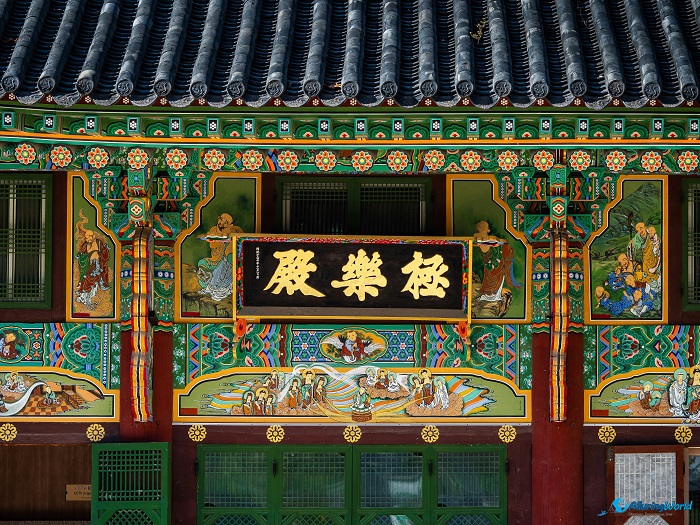
The history of Jogye Temple dates back to the late 14th century during the early years of the Joseon Dynasty. Originally known as Gakhwangsa Temple, it was established in 1395 since when it has been an important center of Buddhist practice and learning ever since, but it is important to be mentioned that the temple’s name was later changed to Jogyesa in 1910 when it became the principal temple of the Jogye Order, which played a crucial role in revitalizing Korean Buddhism after centuries of suppression under Confucian rule during the Joseon period. The Jogye Order emphasized a return to the traditional practices and teachings of Korean Buddhism, focusing on meditation, doctrinal study, and ethical living.
Jogye Temple’s significance grew in the early 20th century when it became the headquarters of the Buddhist Purification Movement, a reform movement aimed at restoring the integrity of monastic discipline and practices, and during this time, the temple also served as a focal point for the preservation of Korean Buddhism against the pressures of Japanese colonial rule, which sought to assimilate Korean religious institutions. The temple’s role in these movements solidified its importance not just as a religious site but also as a symbol of cultural and national identity.
The architecture of Jogye Temple reflects both the traditional Korean style and the adaptations made over centuries of renovation and restoration. The temple complex is a harmonious blend of historical and modern elements, with its main hall, Daeungjeon, being the most prominent structure. Daeungjeon, which houses the statue of Sakyamuni Buddha, the historical Buddha, is an exquisite example of Korean Buddhist architecture, and in addition to this, the hall is adorned with intricate carvings, colorful dancheong (decorative painting on wooden buildings), and large, imposing pillars that create an atmosphere of reverence and tranquility. The interior of the hall is equally impressive, with a serene ambiance enhanced by the scent of incense, the flickering light of candles, and the soft chanting of monks.
The temple grounds also include the Beomjong-gak pavilion, where the temple’s large bronze bell is housed, and this bell is traditionally rung 28 times in the morning and 33 times in the evening, symbolizing the liberation of sentient beings from worldly suffering. Another significant structure is the Geukrakjeon Hall, which is dedicated to Amitabha Buddha, representing infinite light and life. The hall is often used for memorial services and prayers for the deceased, making it an important place for the faithful who come to seek solace and spiritual guidance.
Certainly, a unique feature of Jogye Temple is its proximity to the urban environment, as it is located within walking distance of some of Seoul’s busiest neighborhoods. Despite this, the temple maintains an atmosphere of peace and contemplation, offering a stark contrast to the surrounding modernity. The temple grounds are meticulously maintained, with well-kept gardens, ancient trees, and seasonal flowers that enhance the spiritual experience, and the massive locust and baeksong trees within the temple complex are particularly noteworthy because some of them are over 500 years old, providing a living link to the past and symbolizing endurance and resilience.
In addition to all this, Jogye Temple is also a vibrant cultural hub because it hosts numerous religious and cultural events throughout the year. One of the most significant is the annual Lotus Lantern Festival, held in May to celebrate Buddha’s birthday, and during this festival, the temple and its surroundings are adorned with thousands of colorful lanterns, creating a mesmerizing and festive atmosphere. The highlight of the festival is the lantern parade, which attracts visitors from all over the world, offering them a glimpse into the rich traditions of Korean Buddhism. Nevertheless, throughout the year, the temple also offers various programs for visitors, including temple stays, meditation sessions, and lectures on Buddhist philosophy, allowing them to engage deeply with the spiritual practices of Korean Buddhism.
In conclusion, visiting Jogye Temple is a rewarding experience for those seeking a deeper understanding of Korean culture and spirituality, and since the temple is easily accessible, it is located in the bustling district of Jongno, which is a major cultural and historical area of Seoul. As visitors can reach the temple via a short walk from Anguk Station or Jonggak Station on the Seoul Subway, making it a convenient stop for those exploring the city’s other historical sites, such as Gyeongbok, still the temple’s serene atmosphere, coupled with its rich history and stunning architecture, makes it a place of both reflection and learning.
Whether visitors are drawn by the desire to explore the teachings of Korean Buddhism, participate in cultural festivals like the Lotus Lantern Festival, or simply seek a peaceful retreat in the heart of Seoul, Jogye Temple provides an unforgettable journey into the soul of Korean spirituality, and its enduring presence in a rapidly modernizing city serves as a poignant reminder of the importance of preserving cultural and religious traditions in a world of constant change.

